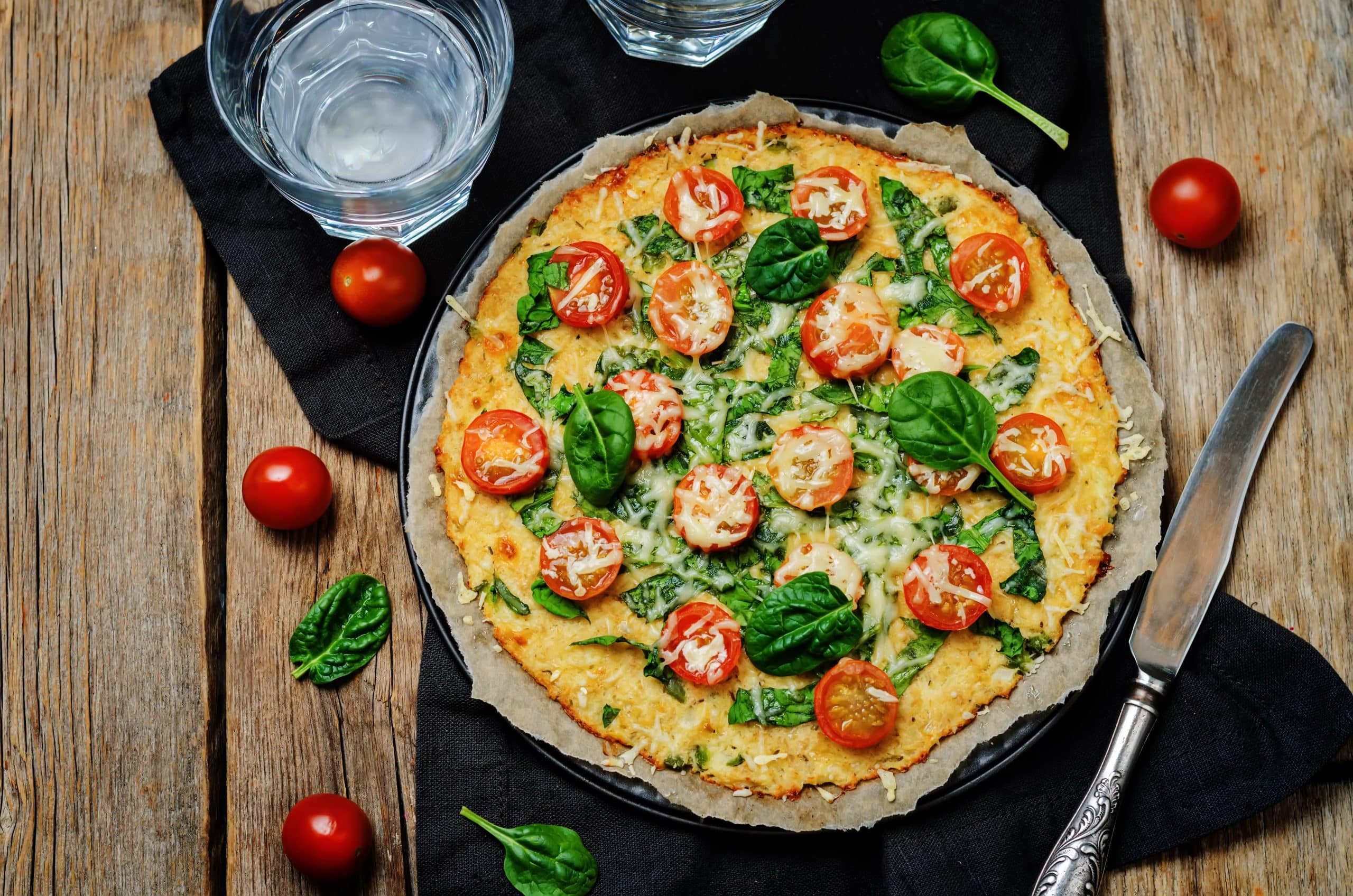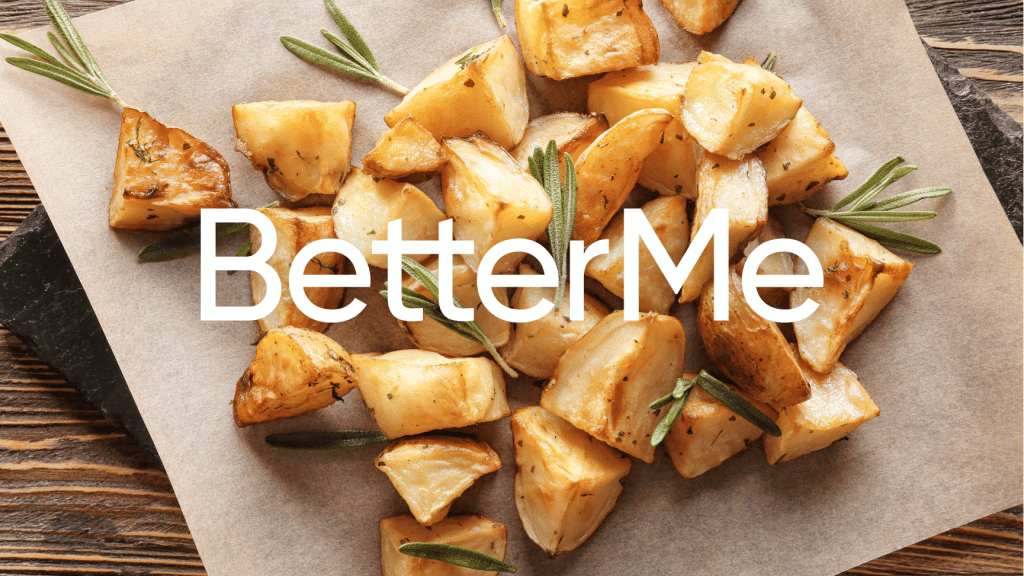Ultra processed ingredients, too many calories, too many carbs. Sound familiar? This is often the case when it comes to pizza. And it’s even worse when you’re trying to eat healthy and need to be gluten-free. But not anymore! This gluten-free cauliflower pizza crust is a delicious and nutritious way to enjoy pizza. In this article, we’ll share a tried-and-true easy-to-follow gluten-free cauliflower pizza crust recipe. You’ll love how simple and delicious it is to make. Because it’s made with cauliflower, you’ll get an extra boost of vitamins and minerals that processed wheat-based pizza dough just can’t provide. We’ll share with you a dozen reasons why this pizza crust is the perfect gluten-free alternative to traditional pizza dough. Plus, you’ll get a step-by-step guide on making your own gluten-free cauliflower pizza crust at home.
Thin Cauliflower Gluten-Free Pizza Crust Recipe (6)
This gluten-free cauliflower pizza crust recipe is simple to make, delicious, and packed with nutrition. It’s sturdy enough to hold your favorite sauce and toppings, even if you’re an avid pizza diner.
Ingredients:
- 1 ½ tsp Baking powder
- One head of medium-sized cauliflower (enough to yield 2 cups of riced cauliflower)
- 1 Egg
- ⅓ cup Gluten-Free All Purpose Flour (like Bob’s Red Mill 1:1 GF APF)
- 1 tsp Italian Seasoning
- ½ tsp Garlic Powder
- Toppings of choice
Instructions:
- Preheat the oven to 450F. Line a baking sheet with parchment paper.
- Rice the cauliflower in an s-blade food processor or by grating it with a cheese grater. We recommend using the food processor for the best results.
- Pour the priced cauliflower into a large bowl and microwave for 3 minutes. This helps to steam the cauliflower and make it easier to work with.
- Extract as much water as you can from the steamed cauliflower rice. Use a cheesecloth or paper towel and press firmly on the cauliflower to extract as much moisture as possible.
- Put the cauliflower into a mixing bowl and add the egg, gluten-free all-purpose flour, Italian seasoning, and garlic powder.
- Mix everything until a dough forms.
- Place the dough on the lined baking dish. Place a sheet of parchment paper on top and press the dough down until it’s about 1/2 inch thick.
- Bake in a preheated oven for 15 minutes.
- Add your favorite toppings and bake for another 5-10 minutes, or until the cheese is melted and bubbly.
- Let cool for 5 minutes, slice, and enjoy!
Read More: Healthy Homemade Pizza: Is It A Myth? + Tips, Facts, Ingredients, Recipes
Thick, Fluffy Cauliflower Pizza Crust Recipe (6)
If you’re looking for a thicker, fluffier cauliflower pizza crust, this recipe is for you. This gluten-free cauliflower pizza crust still has all the nutrition of the thin version but with a bit more structure and substance.
Ingredients:
- One head of medium-sized cauliflower (enough to yield 2 cups of riced cauliflower)
- 1 cup almond meal
- 2 tbsp coconut flour
- 2 Large eggs, lightly beaten
- 1 tbsp Italian seasoning
- ½ tsp sea salt
- ¼ tsp Freshly ground black pepper
- Toppings of choice
Instructions:
- Preheat the oven to 350 F. Line the baking sheet with parchment paper
- Rice the cauliflower in a food processor to yield a crumbly texture.
- In a large mixing bowl, combine the almond meal, coconut flour, eggs, Italian seasoning, sea salt, and ground black pepper. Stir until combined.
- Add the cauliflower to the bowl and mix until everything is evenly distributed.
- Place dough onto the parchment paper-lined baking sheet. Press the dough down until it’s about ½ inch thick.
- Bake for 20 minutes, or until golden brown.
- Remove from the oven and add your favorite toppings and bake for another 5-10 minutes, or until the cheese is melted and bubbly.
- Let cool for 5 minutes, slice, and enjoy!
Are Cauliflower Pizza Crusts Gluten-Free?
Yes, the cauliflower pizza crust recipes above are both gluten-free! The thin crust is made with a combination of cauliflower and gluten-free all-purpose flour, while the thick crust is made with cauliflower, almond meal, and coconut flour.
Both versions are free of wheat, barley, rye, spelt, and other grains that contain gluten. This makes them a great option for those with celiac disease or other gluten sensitivities (3).
That said, not all cauliflower pizza crusts are gluten-free. Some recipes call for wheat flour which contains gluten.
Be sure to read the ingredients label before making or purchasing a store-bought cauliflower pizza crust to make sure it is gluten-free. Avoid any crusts that contain wheat, barley, rye, or spelt.
Are Cauliflower Pizza Crusts Healthier Than Traditional Pizza?
Cauliflower pizza crusts are healthier in some ways than traditional pizza crusts. That’s because they:
Contain More Fiber
Cauliflower is high in fiber, helping you to feel fuller for longer and aiding with digestion. Fiber is also essential for gut health and may help reduce the risk of certain diseases (5).
Contain Many Vitamins And Minerals
Cauliflower is a good source of vitamins, minerals, and antioxidants such as vitamin K, folate, vitamin B6, and potassium (1). These vitamins and minerals serve a variety of purposes in the body including supporting your immune system and helping to regulate blood pressure (4) (7).
Are Low In Calories
A traditional pizza crust is made with refined flour which is stripped of its natural nutrition and can be high in calories. On the other hand, cauliflower pizza crusts are much lower in calories, making them a great option for those looking to cut back on calories.
Have Fewer Carbs
Traditional pizza crusts are made with refined white flour which is high in carbohydrates. While there’s nothing wrong with carbs, if you’re trying to reduce your carbohydrate intake, a cauliflower pizza crust is a good way to go.
Want to build an attention-grabbing bubble butt, blast away fat that’s stored in all the wrong places, spring-clean your diet, turn back the clock on your skin, skyrocket your self-confidence and shatter your insecurities? Check out the BetterMe app and set this plan in motion!
Contain Fewer Additives
Homemade cauliflower pizza crusts are made with whole-food ingredients and contain no preservatives, additives, or artificial flavors. Store-bought ones likely contain some of these additives to improve their shelf life.
Can Be Made Gluten-Free
Traditional pizza crusts are usually made with wheat flour, which contains gluten. Gluten can be difficult to digest and may cause unpleasant symptoms in those who are sensitive or intolerant (8).
Cauliflower pizza crusts can be made gluten-free, making them a much better option for those with celiac disease or other gluten sensitivities.
Which Is Better, Gluten-Free Or Cauliflower Pizza Crust?
The best option depends on your dietary needs and preferences. Those with gluten sensitivities or celiac disease should opt for a gluten-free cauliflower pizza crust. Those looking for a lighter or low-carb option can also benefit from choosing a cauliflower pizza crust over traditional pizza crusts.
If you don’t have any specific dietary needs or preferences, then the choice is ultimately up to you. Both options can provide a tasty and satisfying meal.
How Many Carbs Are In Cauliflower Gluten-Free Pizza Crust?
The amount of carbs in a cauliflower gluten-free pizza crust depends on the ingredients used to make it.
In one example we found, a medium-sized cauliflower gluten-free pizza crust contains approximately 20 grams of carbohydrates for the entire pizza (2). This is much lower than traditional pizza crusts.
Read More: Keto Cauliflower Recipes To Try Today!
Which Toppings Can Be Used On A Cauliflower Pizza Crust?
Cauliflower pizza crusts can be topped with the same ingredients that you would use on a traditional pizza. Popular toppings include cheese, vegetables, meats, and herbs. Be sure to top your cauliflower pizza crust with plenty of vegetables to make it a healthier meal.
You can also experiment with different sauces such as pesto, tomato, or garlic.
If you need to, avoid any toppings that contain wheat, barley, rye, or spelt to keep the pizza gluten-free. Some hidden sources of gluten include:
- Soy sauce – many brands contain wheat – tamari is a gluten-free alternative
- Seasoning blends – some contain wheat flour or malt powder
- Salad dressings- many are thickened with wheat flour
- Vinegar and condiments – some are made with malt vinegar or other forms of wheat
When it comes to weight loss, progress is made by inches, not miles, so it’s much harder to track and a lot easier to give up. BetterMe app is your personal trainer, nutritionist and support system all in one. Start using our app to stay on track and hold yourself accountable!
The Bottom Line
Cauliflower pizza crusts are in some ways a healthier alternative to traditional pizza crusts. They’re low in calories and carbs, contain fewer additives, and can be made gluten-free.
And since they’re made with simple ingredients, you can top them with your favorite healthy toppings for a delicious and nutritious meal. Give cauliflower pizza crusts a try the next time you’re in the mood for pizza. You might be surprised at how tasty they are!
DISCLAIMER:
This article is intended for general informational purposes only and does not serve to address individual circumstances. It is not a substitute for professional advice or help and should not be relied on for making any kind of decision-making. Any action taken as a direct or indirect result of the information in this article is entirely at your own risk and is your sole responsibility.
BetterMe, its content staff, and its medical advisors accept no responsibility for inaccuracies, errors, misstatements, inconsistencies, or omissions and specifically disclaim any liability, loss or risk, personal, professional or otherwise, which may be incurred as a consequence, directly or indirectly, of the use and/or application of any content.
You should always seek the advice of your physician or other qualified health provider with any questions you may have regarding a medical condition or your specific situation. Never disregard professional medical advice or delay seeking it because of BetterMe content. If you suspect or think you may have a medical emergency, call your doctor.
SOURCES:
- Bioactive Compounds and Antioxidant Activity of Fresh and Processed White Cauliflower (2013, hindawi.com)
- Calories in Cauliflower Crust Pizzas (n.d., nutritionix.com)
- Celiac Disease and Non-celiac Wheat Sensitivity: State of Art of Non-dietary Therapies (2020, frontiersin.org)
- Exploring the Immune-Boosting Functions of Vitamins and Minerals as Nutritional Food Bioactive Compounds: A Comprehensive Review (2022, mdpi.com)
- Health benefits of dietary fiber (2009, academic.oup.com)
- How To Make Perfect Gluten-Free Cauliflower Pizza Crust – 2 Ways! (2020, Goodfoodbaddie.Com)
- Minerals and blood pressure (1991, pubmed.ncbi.nlm.nih.gov)
- Non-Celiac Gluten Sensitivity: A Review (2019, ncbi.nlm.nih.gov)











